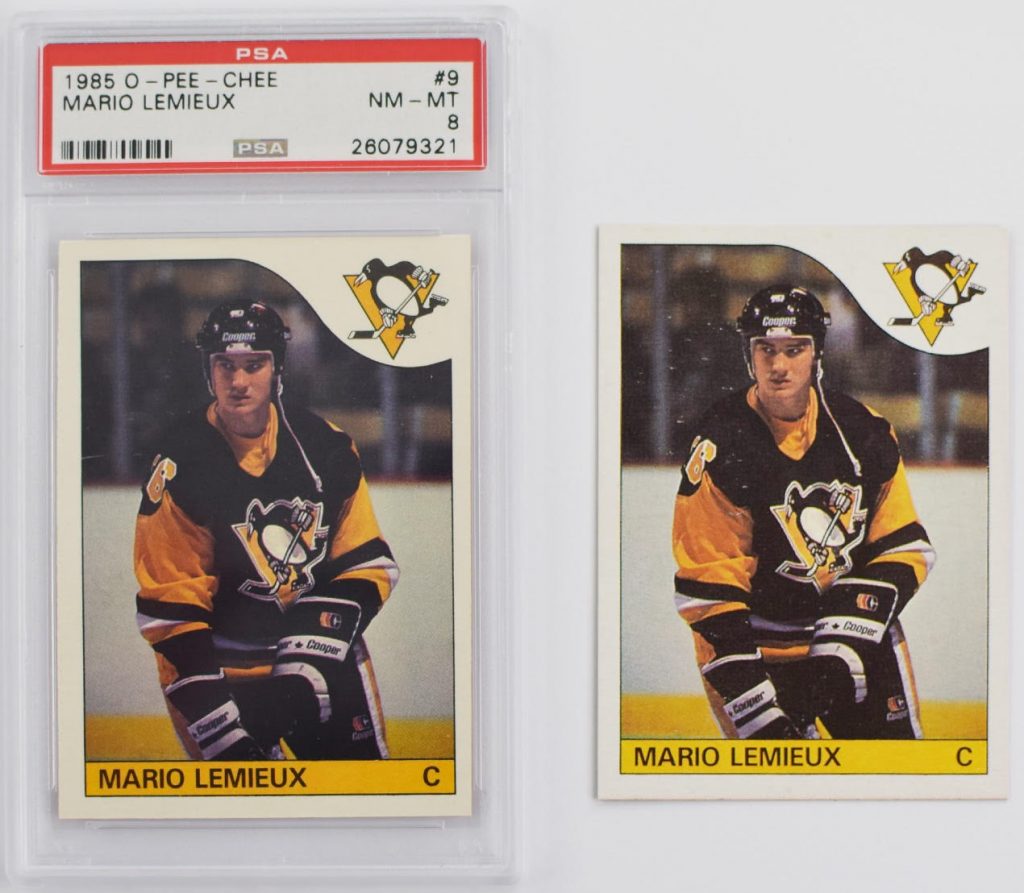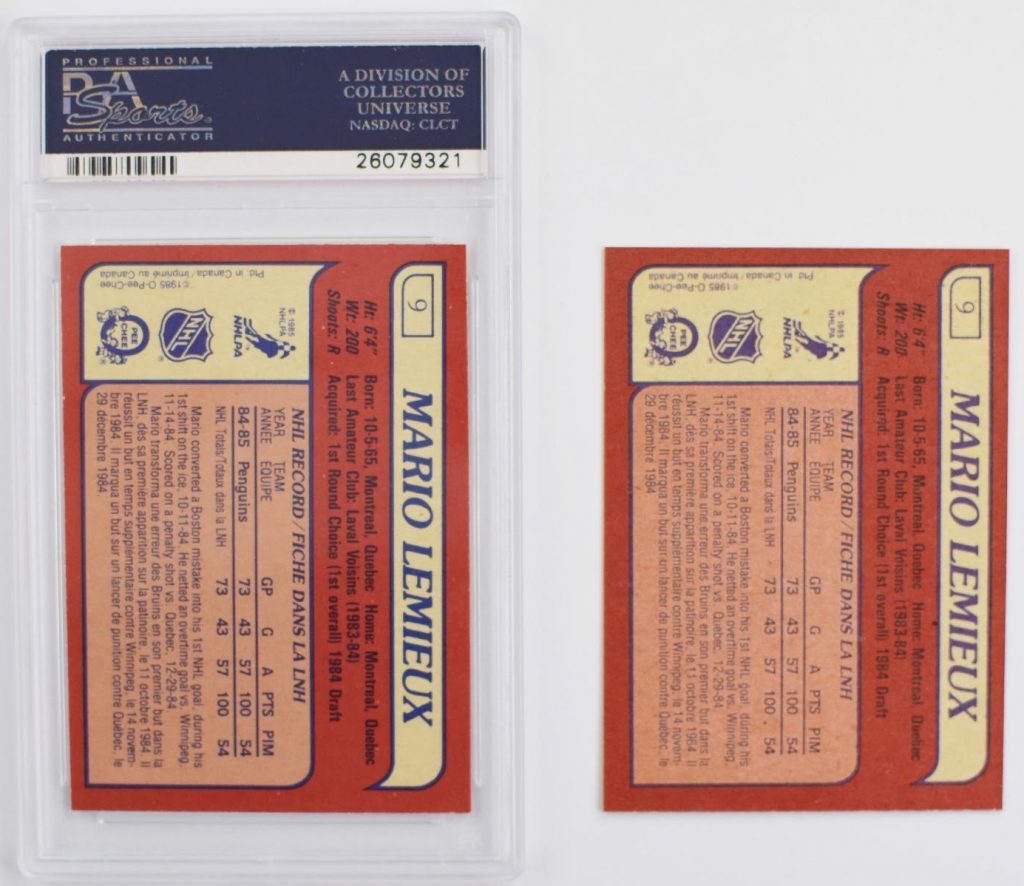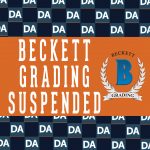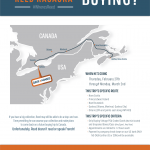The 2019 National Sports Collectors Convention kicks off tomorrow in Chicago. Last week as our head buyer Reed was busy preparing for the show, he was at home sorting through a recent purchase that he had made.
He came across a 1985/86 O-Pee-Chee Mario Lemieux Rookie Card that wasn’t part of the set that he purchased. The set he purchased contained a PSA 8 Lemiuex rookie. The seller didn’t even know this ungraded card was in there. Reed showed the card around the office to a few co-workers…and they all didn’t notice it…the raw card was a counterfeit!
Here is what Reed had to say about spotting the fake:
In this particular instance, there are numerous telltale signs this card is not real. The first sign is how blurry the picture is. That’s what happens sometimes when you try to make a copy of something, especially with 1980s technology, when I suspect this was made. The solid black lines, that make up the border on the front of the card as well as the Penguins logo, do not appear solid…they look like a series of small dots. Again, no matter how good your copy machine is, it’s impossible to replicate these solid lines formed by ink on printing plates to cardboard.
The second sign is the quality of the cardboard. Handle enough cards from a certain year and manufacturer, and you get a feel for the cardboard – the weight and thickness, the color, and even the way the blades cut card. This card stock is too clean, dare I say a higher quality grade over the crappy 80s OPC cardboard.
The third sign is the way this card has been cut, presumably from a sheet. While it doesn’t happen 100% of the time, most OPC collectors know the cuts are always rough, the result of the Canadian’s inability to secure sharp blades for decades to cut cards at the OPC factory.
No matter what your views are on grading, we all should be thankful that when you buy graded cards from a respectable third party authenticator, you know the cards are indeed authentic. Yes, I know every several hundred thousand cards a counterfeit one gets past the authentication process, but for the beginner, novice, and average collector, buying graded cards offers peace of mind. Take it from someone who has unknowingly bought counterfeit cards before, the stinging feeling of being screwed over never goes away.
So there you have it…a little insight from Reed into how to spot a counterfeit card…who has seen thousands upon thousands of cards in his years in the industry and travels across North America on his buying trips!
If you have cards (real ones of course) you are looking to sell or would like to speak to Reed about where his next buying trip will take him, please email him at [email protected].
Related Posts
 1-888-440-9787
1-888-440-9787
 We Ship Internationally
We Ship Internationally
 FREE Gifts with orders $100+
FREE Gifts with orders $100+










Comments are closed.